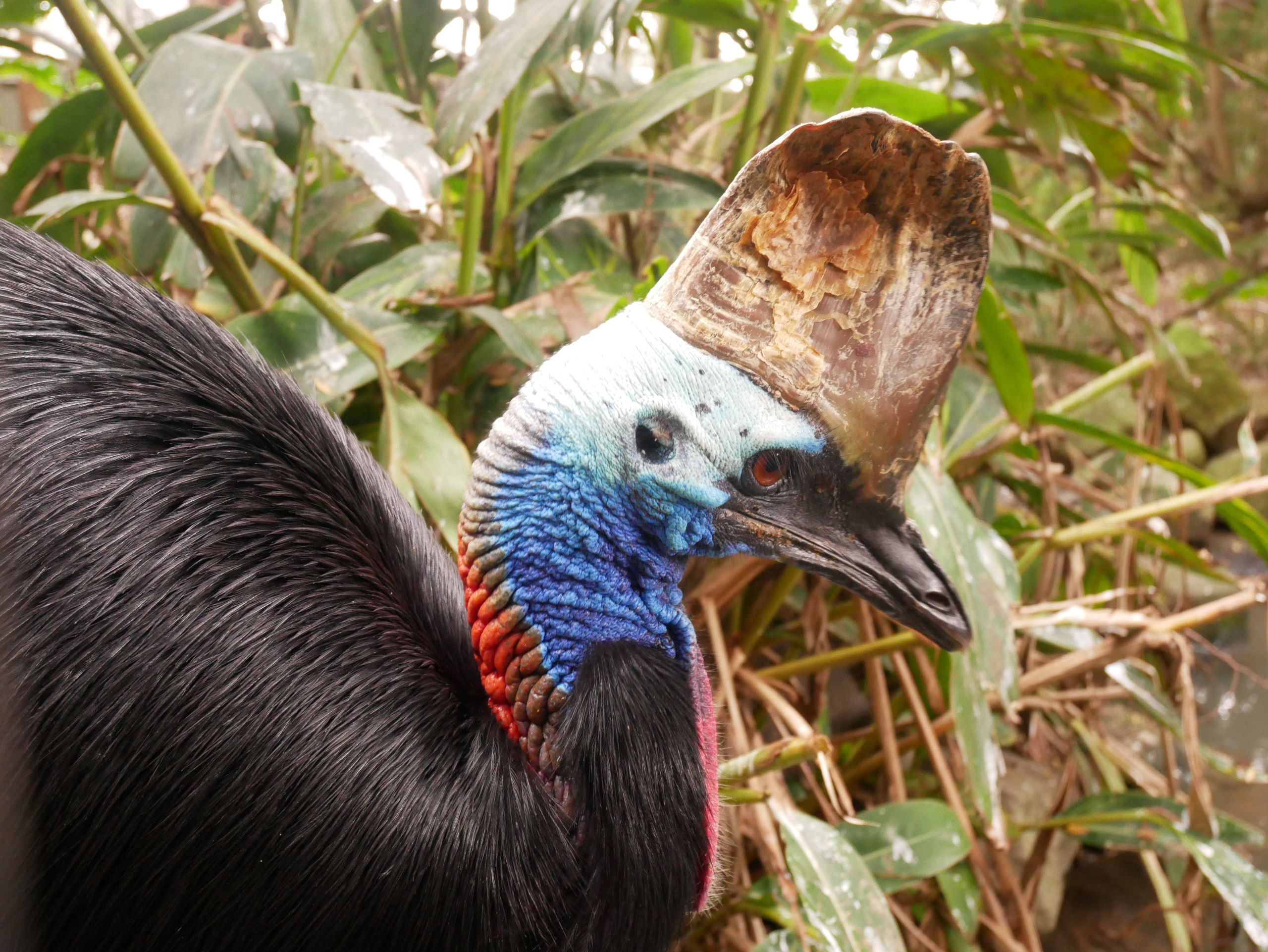Southern Cassowary
Discover this fascinating bird and its unique characteristics.
Size and Weight
The Southern Cassowary is a large, flightless bird. Adults can stand up to 1.8 meters (almost 6 feet) tall, and they usually weigh between 29 to 59 kilograms (64 to 130 pounds). Females are generally larger and heavier than males.
Appearance
The Southern Cassowary has striking features. Its feathers are black, and it has a bright blue face and neck with two red wattles (flaps of skin) hanging down from its throat. On top of its head, it has a tall, bony crest called a casque, which can help it push through dense vegetation. Its legs are strong and powerful, with three toes on each foot, including one with a sharp claw that can be up to 12 centimeters (about 5 inches) long.
Diet
Cassowaries are mostly frugivores, meaning they primarily eat fruit. They are important for rainforest ecosystems because they spread the seeds of the fruits they eat through their droppings. Cassowaries also eat fungi, insects, small vertebrates, and even plants.
Geography
Southern Cassowaries are found in northern Queensland, Australia, as well as in parts of New Guinea and nearby islands. In Australia, they are mainly found in the wet tropical rainforests.
Habitat
Cassowaries live in tropical rainforests, where they are well adapted to moving through the dense undergrowth. They can also be found in woodlands, mangroves, and swamp forests, but they prefer areas with plenty of fruiting trees.
Social Structure
Cassowaries are solitary birds, meaning they usually live alone except during breeding season or when females are raising their chicks. They are territorial and will defend their area aggressively, especially during the breeding season.
Breeding
Breeding season for cassowaries is usually from June to October. The female lays between 3 to 5 large, green eggs on a nest made of leaves and other plant material. After laying the eggs, the female leaves, and it’s the male who incubates the eggs and looks after the chicks once they hatch. The father stays with the chicks for about 9 months, teaching them how to find food and avoid danger.
Threats
Southern Cassowaries face several threats, including habitat loss due to deforestation and urban development, vehicle strikes when crossing roads, and attacks from dogs. They are also at risk from climate change, which affects the availability of their food sources.
Conservation Status
The Southern Cassowary is listed as “Endangered” in Australia. This means they are at a high risk of extinction in the wild if nothing is done to protect them.
Conservation Efforts
Conservation efforts for Southern Cassowaries include protecting their rainforest habitat, building wildlife corridors to help them move safely between forested areas, and installing road signs to warn drivers of their presence. Some programs also focus on educating people about cassowaries and the importance of keeping their dogs on leashes in cassowary habitats. Additionally, wildlife rescue organizations work to help cassowaries that have been injured or displaced
